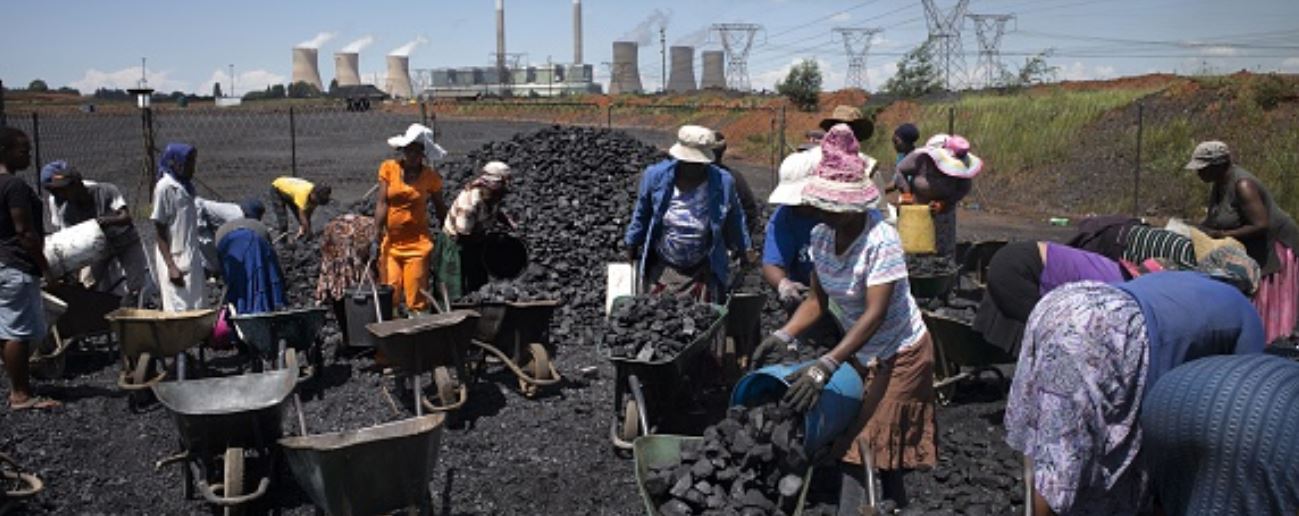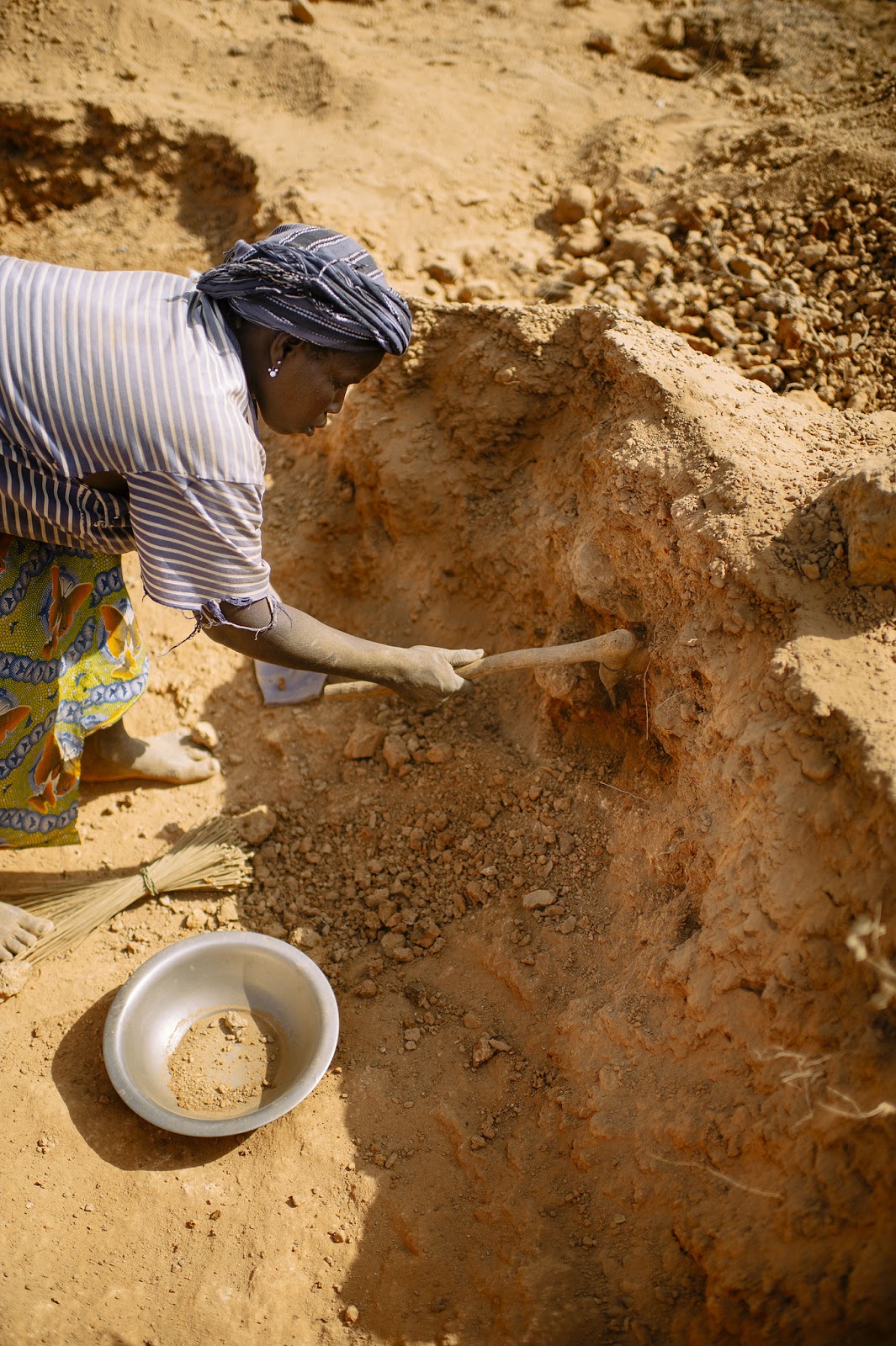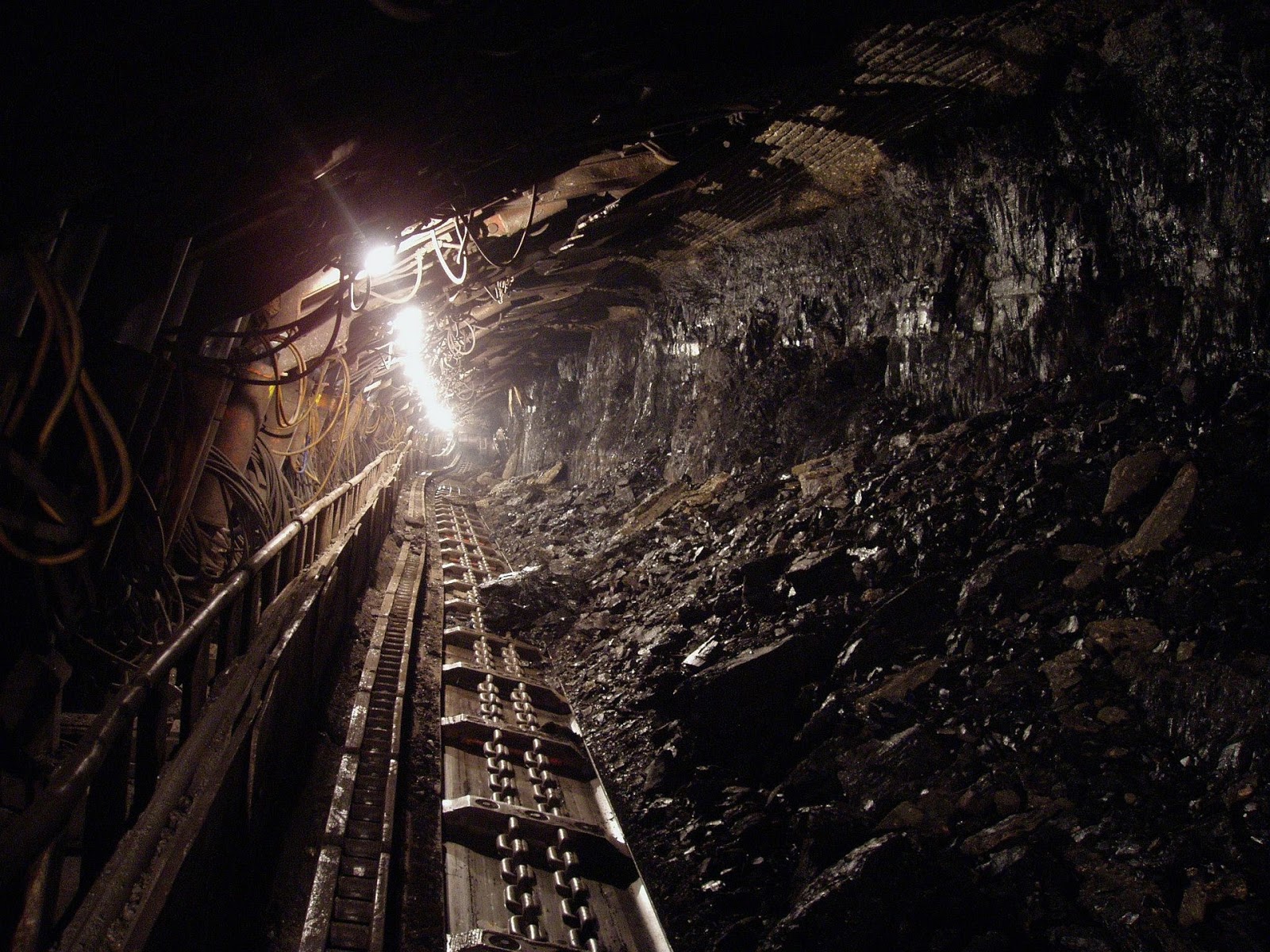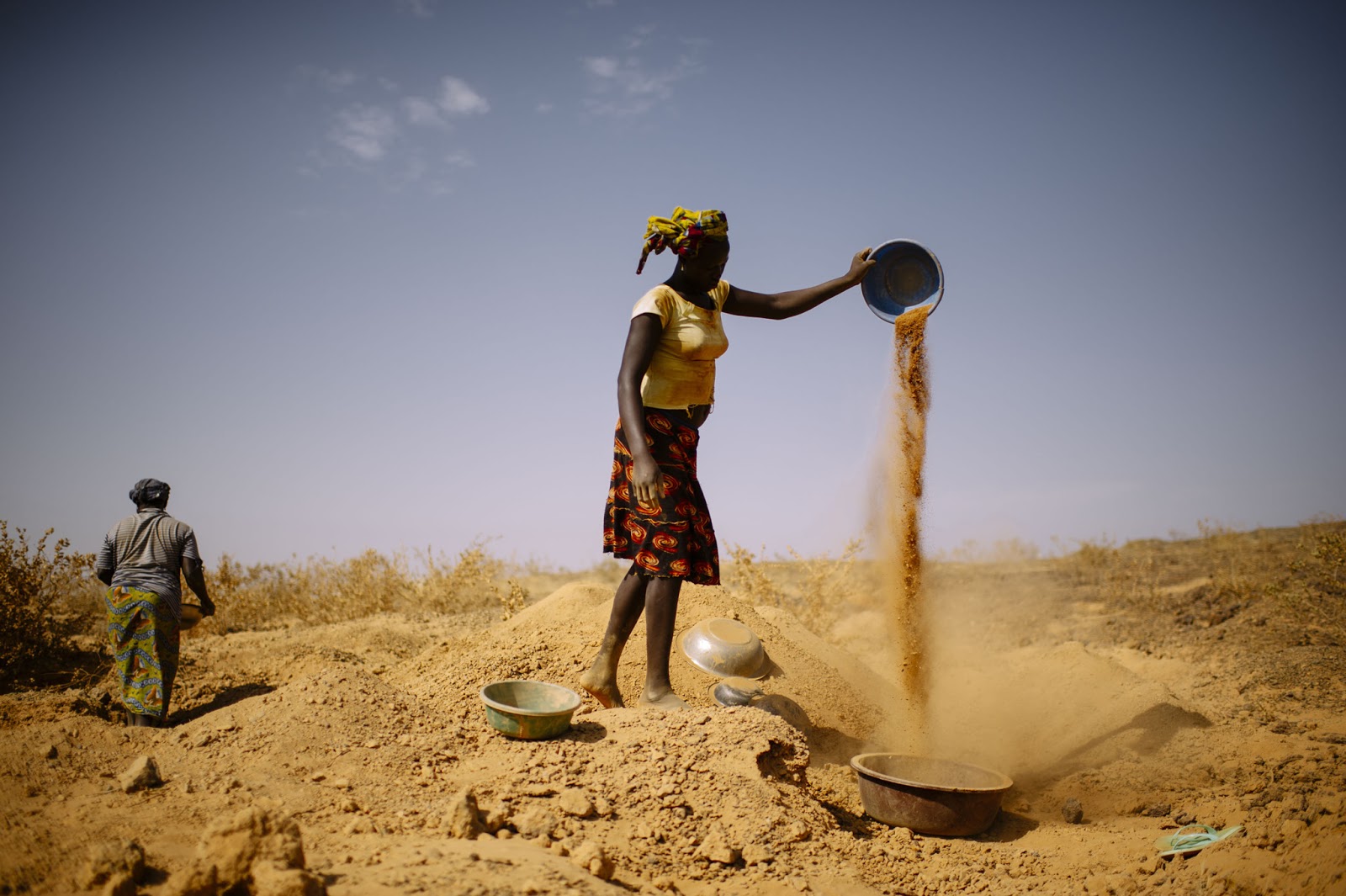SURVIVING THE “UNDERGROUND” ECONOMY: WOMEN MINERS IN SOUTH AFRICA
by Andrew Green, Women Across Frontiers, 22 April 2018.

It has been 15 years since South Africa introduced its first proposed quotas to encourage the mining industry to hire women. The quotas, which were included in the country’s draft mining charter, were a marked change in a country that once prevented women from even entering the industry.
 |
| Photo Credit: Flickr; Ollivier Girard for CIFOR. |
The charter set a baseline of 10 percent female participation in the sector within five years. The industry missed that deadline, though it did achieve 10.5 percent overall representation by 2014. An updated charter, which the government introduced last year, includes higher thresholds for management positions. Other needed changes were much slower to come, including separate bathrooms and facilities for changing. And some elements are still missing—including the enforcement of sexual harassment policies, which researchers say continues to fuel inequalities and can put the lives of women working underground at risk.The charter, known more formally as the Broad-based Socio-economic Empowerment Charter, acknowledged that in a country where mining has outsized economic influence, all people should “have equitable access to the nation’s mineral resources.” Mining is brutal work, requiring miners to wake before dawn, travel deep into the earth, and then spend hours hunched over underground while facing the possibility of a rockfall or a mine collapse. But for women who signed up to work in the country’s mines, there are additional difficulties.
Rewards and Challenges for Female Miners
South Africa is best known for its diamond, gold, and platinum mines, but coal has recently emerged as one of the most lucrative extractives. The country was ranked as the fourth-largest coal producer in the world, according to government statistics, though production has since varied. And at least 17 percent of the country’s miners work for the coal industry, which means that the industry was among those expected to shift in response to the charter.
“The quotas decision was good for change and driving diversity and gender equality in the workplace and the profession,” said Lindi Nakedi, the chairperson of Women in Mining South Africa, which uses different strategies to promote the development of women’s mining careers. Nakedi praised the quotas for “giving women more options for choices of professions.” The move came amid a broader effort to diversify the mining sector following the end of the apartheid era, which had locked all but South Africa’s minority white population out of the upper echelons of the industry. There was no shortage of applicants for the new positions, including women eager to take on the underground jobs from which they had been almost completely excluded.
Dr. Asanda Benya, a lecturer in the department of sociology at the University of Cape Town, has done extensive research on women in the mining sector, including spending more than a year working underground at a mine. She highlighted the fact that jobs in the industry often pay better than other sectors—and certainly better than being unemployed; South Africa’s official unemployment rate is currently above 26 percent. Mining offers health and other benefits. Shifts start early, but also end earlier than they would for women who are cashiers or work in offices—sometimes around 4:00 pm—which means mothers can spend more time with their families. And there is also a perception that the industry offers opportunities for advancement. “In the first few years, you may not be earning a lot of money,” Benya said. “But there is the impression that you can move up the chain.”
These aspects are enough to attract women despite the stigma that surrounds working in a mine: it is seen as a job for undereducated immigrants or people from rural areas of South Africa. Above all, it is still regarded as a man’s job, even by some of the women who now do it. “Some of them don’t tell their friends in big cities what they’re doing underground,” according to Benya.
 |
| Photo Credit: Pixabay |
If a female miner becomes pregnant, she has to contend with additional issues that don’t affect her male coworkers. Operating some of the equipment may be harmful to a fetus in the early stages before a woman even knows she’s pregnant. According to Benya, a pregnant miner is often relocated to work above ground—but only if a position is available. If not, she is sent home until after the delivery. Returning to the mine after a child is born presents its own difficulties, including the near impossibility of being able to breastfeed regularly.Women continue to face other challenges, Nakedi added, like equipment and clothing that are not tailored for their specific needs, as well as the remote locations of mining communities, which can send miners away from their families. The industry has “to rethink these things,” Benya explained. “On the surface, they seem like they are gender neutral, but actually what’s informing some of these designs is masculinity.” She pointed specifically to uniforms, the design of which can make it difficult for women to use the restroom. However, Benya noted that there have been some positive changes, such as the introduction of women’s changing rooms.
The area of greatest concern—and one that has not come close to being fully addressed—is the sexual harassment of women working underground. “Sexual harassment is the order of the day for a lot of women,” Benya said. During the time that she worked in the mine, she described having to cover her breasts to try to prevent men from groping her. “When I was passing by men, they would be whistling.”
Along with the unwanted touching and catcalls, women face the more serious threat of rape and violence. South Africa was electrified in 2012, when the body of 27-year-old miner Pinky Mosiane was discovered underground, a used condom lying nearby. Two years later, a man was convicted and sentenced to prison for the crime.
But Benya said it is rare that anyone defends the women or pushes for better policies or more security, including the Chamber of Mines, which is charged with the protection of miners. In the wake of Mosiane’s death, a Chamber of Mines spokesperson told a local news agency that the body does “not deal with gender-specific safety issues”, according to the article. “The Chamber of Mines deals with safety issues like rockfall, like noise, but it does not deal with gender issues,” Benya said. “You can be raped underground, sexually harassed underground, even murdered underground, and the Chamber of Mines will never take up such cases.”
Although mining companies often have sexual harassment policies in place, they can be hesitant to punish or fire a top-producing male employee, regardless of his violation. Instead, accusers often find themselves reassigned to jobs above ground. This action can serve as a de-facto punishment of the victim: a miner who loses the chance to develop underground experience enjoys more limited opportunities for advancement within the company.
Beyond Filling Quotas
Paradoxically, part of the problem for female miners may be the result of too much focus on filling the quotas. “The challenge with the quota system is that companies only aim for what is required, and once those numbers are met, there is no longer a drive to have more women placed in positions,” Nakedi explained. “Whereas if this is a natural progression and part of the holistic cultural approach of the organization, then change is driven in a positive way and viewed as beneficial to the business by all stakeholders.”
 |
| Photo Credit: Flickr; Olivier Girard for CIFR |
Those attitudes will start to shift, she concluded, when the environment allows women to do their jobs in comfort and safety. But that change will require more than just quotas.Benya agreed that the solution is not necessarily increasing numbers, but figuring out how to change the culture—not just within South Africa’s coal mines, but across the entire mining industry—to be inclusive and responsive to the needs of all employees. That includes not only thinking about how policies are constructed, such as designing uniforms specifically for women and instituting breaks so that mothers can breastfeed, but also re-engineering ideas of who is a successful employee. “If you are taking risks, you’re a man. If you treat people who are not able to do this kind of work in this way, you’re a man. You’re a man if you do these things to women. That discourse underground feeds into the idea that women are not supposed to be underground.”
Top Photo Credit: Marco Longari/AFP/Getty Images)


